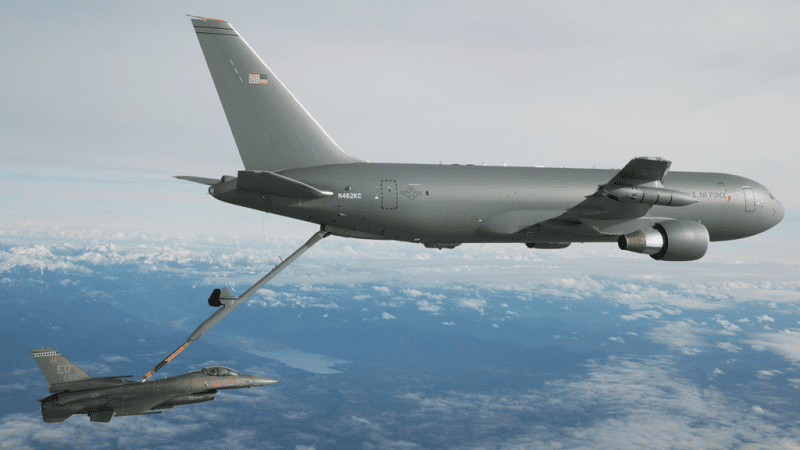Poland Plans to Accelerate Procurement of MRTT Capability

Photo. Staff Sgt. Brandi Hansen/USAF
The necessity to accelerate the Polish aerial refuelling programme named Karkonosze has now been discussed at least since early 2023. No changes happened within that scope until today. Analyses are still conducted regarding the plausible acceleration of the programme, but no conclusions when it comes to decision have been reached, Defence24 found out.
Lt. Col. Marek Pawlak, spokesman for the General Command of the Armed Forces, responded to our inquiry.
“Within the scope of acquiring strategic airlift assets, MEDEVAC assets, and aerial refuelling, the Polish MoD is carrying out a multi-dimensional analysis of different forms of securing these capabilities, and the possible timelines for acceleration of the implementation, as opposed to the original acquisition plans made within that scope”, the response reads. That means that the direction adopted, aimed at accelerated procurement of tanker/transport/MEDEVAC/CASEVAC aircraft, is still valid. Single-use tanker aircraft these days may be considered obsolete, concept-wise.
Assessing the progress is difficult, as the response reads:
”The inquiry submitted falls within the scope of information about the use plans, combat potential, and organizational and operational solutions applicable in the case of specific weapons platforms (as the tankers are referred to as the Force Multiplier), and also refers to combat readiness and operational planning, thus the information is related to state security and economy, and this information is excluded from the scope of information that can be made public. Therefore, due to the analytical effort underway, labelled with a relevant confidentiality clause, this information shall not be disclosed to the public media at the present stage”.
Aerial refuelling platforms offer precious capabilities of increasing the capabilities of the owner’s combat aviation assets, provided that the operated aircraft are capable of aerial refuelling. During offensive air operations, the tankers can supply fuel to combat aircraft enroute, or during the RTB leg. This radically extends the operational radius and the distance at which the mission can be flown.
In a defensive operation, the tankers support their own DCA assets. They can orbit for hours, providing fuel to combat aircraft that do not have to land, for the sake of refueling. Thanks to the above, blue-side fighters can remain combat-ready over a longer period, with the exclusion of fuel as a limiting factor - just the physiology of the pilots, and weapons play a role here. Landing for refuelling is a waste of airframe, as the structure can only withstand a specific number of landings throughout its lifecycle, and, a waste of time, above all. Aircraft that land need a lot of time to recover and fly again.
Two primary aerial refuelling platforms are operated by the western air forces, also offering additional airlift and CASEVAC capabilities. At least when it comes to brand-new aircraft designed specifically for the said purpose. These are the popular Airbus A330 MRTT (enjoying a lot of commercial success), and the smaller Boeing KC-46A Pegasus platform, which, as the manufacturer claims, are well-protected from EMP that may occur after a nuclear explosion. It is also possible that second-hand passenger aircraft are procured, and then modified to become aerial tankers (based on Boeing 737, or Boeing 767). Another option would be to procure second-hand tanker aircraft, for instance via the American EDA (Excess Defense Articles) programme. A similar path was adopted for the C-130H Hercules procurement.



